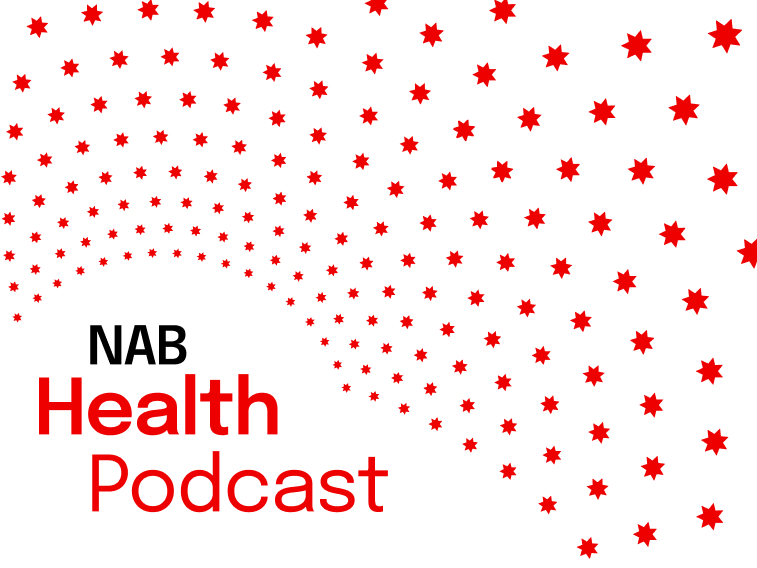NAB Head of Behavioural and Industry Economics Dean Pearson sat down with the PodMD team to discuss our recent 2024/25 NAB Health Special Report (Part 2). PodMD create podcasts for medical professionals.


Podcast
How eHealth ready is your business? Dr Mukesh Haikerwal, Chair of the World Medical Association is leading a team of clinicians to roll out eHealth for the National E-Health Transition Authority (NEHTA). Here, he talks you through the eHealth basics.

As of July this year, Australians can register for a Personally Controlled Electronic Health Record (PCEHR), designed to achieve a more comprehensive and connected system, allowing practitioners to quickly access a patient’s entire record in one hit via national eHealth records.
As more practitioners and individuals enrol in the scheme, time will be saved by electronically recording all treatments received by a patient in the patient’s continually updated online file. This could include, for example, discharge summaries, pathology and specialist reports, electronic referrals and pathology orders, plus electronic prescriptions.
How can you get your practice eHealth ready? Dr Mukesh Haikerwal, leading a team of clinicians rolling out eHealth nationally, outlines two key points for you to action.
The Healthcare Identifiers Service (HI Service) is a national system for allocating a unique identifier to healthcare professionals, their organisations and members of the public. Healthcare professionals will need a ‘Healthcare Provider Identifier – Individual’ (HPI-I), and their organisation will need a ‘Healthcare Provider Identifier – Organisation’ (HPI-O). Both are available right now. HPI-Is are available from the Australian Health Practitioner Regulation Agency (AHPRA) if you’re AHPRA registered, or from Medicare. HPI-Os are available from the HI Service run by Medicare.
Your software provider can tell you when upgrades will be ready. You’ll need a computer that can be used for reading from and writing to eHealth records and software that conforms to the national specifications. These national specifications will mean your computer system can connect with the national eHealth records system, allowing you (and other healthcare professionals that have been given permission) to access a patient’s eHealth record.
How will these reforms change your workflows and workload? The system, Dr Haikerwal explains, enhances and supports the already excellent care provided to patients inAustralia. “It’s being designed to minimise impact on the time of GPs and other healthcare professionals participating in the scheme, for instance entering and viewing data,” he notes. “The intention is that, over time, the national eHealth record system can enable GPs to spend less time chasing patient information from multiple sources and more meaningful time with their patients.”
Health professionals participating in the PCEHR system will continue to exercise professional and ethical parameters to their work. The PCEHR is a new way of doing business, as work is passed from one clinician to another (point to point) and potentially will be exposed to the patient directly and to anyone given permission by the patient to access their record (point to share). Clinical record keeping, pride and professionalism will drive more carefully recorded and accurate notes.
Patients will ask questions about the PCEHR – how to register, whether to register and what the benefits are. GPs, nurses and other health professionals are well placed to explain this, but there are time and access constraints. Support material should make it clear that a patient will first need to register for a record. They’ll need to ask a participating and standards-compliant professional to agree to be their nominated provider, or at least add a notation to the PCEHR as well as the local record. They can then choose to have a shared health summary created by their ‘nominated provider’ – usually their regular GP. A shared health summary is an overview of a patient’s health, such as allergies and medications they’re taking. It can be created by any registered medical practitioner, nurse or Aboriginal and Torres Strait Islander health worker.
The Federal Government is working with consumers and healthcare professionals to establish the best and most efficient means of setting up the records and adding data. The priority is to make sure that the national eHealth record system is of benefit to those who have a PCEHR, or who contribute information to one. To be most effective, there needs to be a critical mass of professional and consumer participants. The data needs to be of value, timely and accurate, and all accessing it must be able to depend on it. The time it will take is dependent on the complexity of the patient’s health conditions and the amount of information already available. RACGP Standards (against which most GP practices are accredited) require that GPs have a current health summary for 75 percent of their active patients. Although the Shared Health Summary in the eHealth record is based on the existing GP summary information, the whole data-cleansing and management effort needs to be considered.
© National Australia Bank Limited. ABN 12 004 044 937 AFSL and Australian Credit Licence 230686.